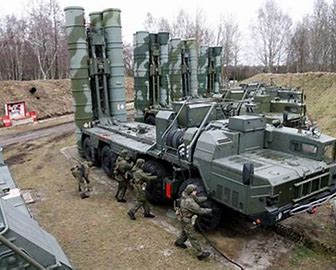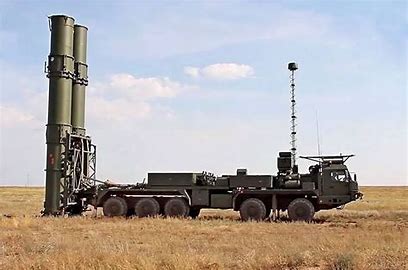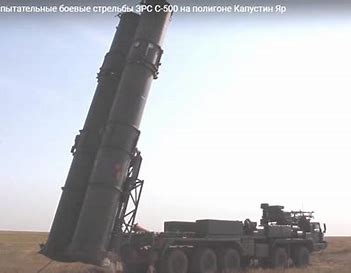
Russia’s latest air defense system, the S-500 Prometheus, has entered into service with a regiment tasked with guarding the airspace above Moscow, marking a significant milestone in Russian military capabilities.

Amidst the backdrop of ongoing conflicts and the ever-evolving landscape of warfare technology, the deployment of the S-500 signals a clear intention by Russia to maintain a formidable defensive posture against any potential aerial threats.

The S-500 Prometheus is developed by Almaz-Antey and represents the next step in the evolution of Russia’s air defense systems, following its predecessors, the S-300 and S-400.

Russian officials have high expectations for the S-500, billing it as a “fifth-generation killer,” capable of targeting advanced fifth-generation aircraft and even low orbit satellites.

This system is designed to combat a range of threats, with the capability to engage targets up to 600 kilometers away and at altitudes of up to 200 kilometers.

Russia’s Defense Ministry reported that the S-500 underwent successful testing against a high-speed ballistic target at the Kapustin Yar testing range in southern Russia.

The advanced capabilities of the S-500 are underlined by its claimed potential to intercept hypersonic missiles and its role in countering threats from space, an arena of increasing military significance.

However, despite the impressive claims regarding its capabilities, the S-500 has faced several challenges in its development. Delays have marred its progress, with full production now expected by 2025. International sanctions and the dependency on foreign components have also impacted its production, causing concerns about the system’s readiness and the rate at which it can be produced.

Experts suggest that the S-500’s interceptor missiles, such as the 40N6M and the new 77N6 series, could provide the system with the edge it needs to fulfill its ambitious mission profile.

Yet, there are doubts about the effectiveness of these interceptors. The actual performance of the S-500 in a combat situation remains to be seen, as the system has not yet been tested against real-world hypersonic targets.

As for the strategic implications of the S-500, if it performs as Moscow claims, it could alter the dynamics of air defense in regions where Russia has strategic interests.

The S-500’s introduction into the armed forces coincides with tensions in areas such as Ukraine, where the ongoing conflict could potentially see the involvement of the new system.

Reports have also indicated that once the S-500 becomes fully operational, Russia may seek to export it to allies such as Turkey and China, potentially reshaping the geopolitical air defense landscape.

As the first regiment of the S-500 begins its duty to guard the skies above Moscow, the world watches closely. The introduction of such an advanced system could provoke shifts in military strategies and countermeasures.

However, the true test of the S-500 Prometheus will come only when it faces real threats, and its performance under combat conditions will ultimately define its place in the annals of air defense history.
